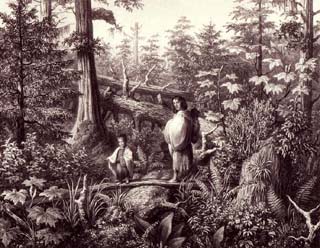|
The International Fur Seal Treaty in 1911 ended the decimation of sea otters for international trade. The Marine Mammal Protection Act of 1972 further prohibited the killing of sea otters in U.S. waters. While these laws protect the sea otters, there were once many Native Alaskan cultures who evolved cultures that maintained a sustainable coexistence with sea otters. Exceptions in the Marine Mammal Protection Act makes accommodations for these cultures to continue their customs and traditions.
(laws.fws.gov/lawsdigest/marmam.html) |

Native Alaskans preserve some of their customs and traditions through the crafts and artwork. Individuals creating such work with traditional materials such as sea otters must be a member of a state or federally-recognized tribe or a certified Indian artisan.
"A certified Indian artisan is an individual certified by the governing body of the tribe of their descent as a non-member Indian artisan." It would not be appropriate to advertise products as "Inupiaq Carvings" if the products were produced by someone who is not a member of the Inupiaq tribe or certified by the tribal governing body as a non-member Alaskan Native artisan of the Inupiaq people.
Many Native
Alaskans rely on the sale of these items for sustainability.
(www.ftc.gov/bcp/conline/pubs/products/alaskaart.htm)
This web site was created by Lynn Tran at the North Carolina State University, Department of Mathematics, Science, and Technology Education on 7/12/03. Faculty advisor Dr. David Eggleston, NCSU, Department of Marine, Earth, & Atmospheric Sciences. Last updated December 29, 2003 .